 When worlds collide, and cultures butt up against each other, theresult is not always confused or destructive. Natacha Atlas lives up toher name, born in Brussels of Egyptian and Moroccan decent, she spenther formative years skipping through Europe, the Middle East, and theUnited States, a journey that clearly left its mark on her life andmusic. Something Dangerousis a gently schizophrenic album, mixing the influences of UK dance,hip-hop, R&B, traditional Arabic, and Hindi pop to create afascinating amalgam. Atlas enlists a number of guest vocalists to duetwith who bring even more color to the music. "Janamaan" features Atlasin a Bollywood-style trading with a male vocalist against a glitchytechno backbeat. Her voice is powerful, full of depth and body thatenraptures as it climbs and descends her words, whether in her lyricalArabic or English. "Eye of the Duck" is a funky, reggae number withNatacha's sampled cooing and Arabic interplay flanking the distinctiveJamaican delivery and flow. "It's when we touch (ooh) / It's when wekiss (ooh)." Sure, it's not too complex, but that's the beauty. It's aperfect club track, simple, sexy, and superb. "Simple Heart" findsNatacha in a duet with Sinead O'Connor, whose contribution is nothingspecial. The track would have worked fine as a solo piece, as Atlas'vocals are attention-demanding while O'Connor's role in the song isrelegated to the background. "Who's My Baby" achieves an almost totalelectronic soundscape that sounds akin to Kylie Minogue, with a snakybass line that pulses around Niara Scarlett's English sung vocals. Onher last solo album, Ayeshteni, Atlas covered Screamin' JayHawkins' "I Put a Spell on You," and here she continues her homage toAmerican rhythm and blues with a slick cover of James Brown's "It's aMan's Man's Man's World." It's all her, on her own, delicately swayingthrough the English lyrics with ease, occasionally slipping into a lineof Arabic complete with vibrato and melisma that's as smooth as silk. Something Dangerousis a kaleidoscopic cross-cultural trip that brings the beauty of Atlas'traditional Arabic loves with the fresh sounds of the West in acreative and harmonious way. -
When worlds collide, and cultures butt up against each other, theresult is not always confused or destructive. Natacha Atlas lives up toher name, born in Brussels of Egyptian and Moroccan decent, she spenther formative years skipping through Europe, the Middle East, and theUnited States, a journey that clearly left its mark on her life andmusic. Something Dangerousis a gently schizophrenic album, mixing the influences of UK dance,hip-hop, R&B, traditional Arabic, and Hindi pop to create afascinating amalgam. Atlas enlists a number of guest vocalists to duetwith who bring even more color to the music. "Janamaan" features Atlasin a Bollywood-style trading with a male vocalist against a glitchytechno backbeat. Her voice is powerful, full of depth and body thatenraptures as it climbs and descends her words, whether in her lyricalArabic or English. "Eye of the Duck" is a funky, reggae number withNatacha's sampled cooing and Arabic interplay flanking the distinctiveJamaican delivery and flow. "It's when we touch (ooh) / It's when wekiss (ooh)." Sure, it's not too complex, but that's the beauty. It's aperfect club track, simple, sexy, and superb. "Simple Heart" findsNatacha in a duet with Sinead O'Connor, whose contribution is nothingspecial. The track would have worked fine as a solo piece, as Atlas'vocals are attention-demanding while O'Connor's role in the song isrelegated to the background. "Who's My Baby" achieves an almost totalelectronic soundscape that sounds akin to Kylie Minogue, with a snakybass line that pulses around Niara Scarlett's English sung vocals. Onher last solo album, Ayeshteni, Atlas covered Screamin' JayHawkins' "I Put a Spell on You," and here she continues her homage toAmerican rhythm and blues with a slick cover of James Brown's "It's aMan's Man's Man's World." It's all her, on her own, delicately swayingthrough the English lyrics with ease, occasionally slipping into a lineof Arabic complete with vibrato and melisma that's as smooth as silk. Something Dangerousis a kaleidoscopic cross-cultural trip that brings the beauty of Atlas'traditional Arabic loves with the fresh sounds of the West in acreative and harmonious way. -  When worlds collide, and cultures butt up against each other, theresult is not always confused or destructive. Natacha Atlas lives up toher name, born in Brussels of Egyptian and Moroccan decent, she spenther formative years skipping through Europe, the Middle East, and theUnited States, a journey that clearly left its mark on her life andmusic. Something Dangerousis a gently schizophrenic album, mixing the influences of UK dance,hip-hop, R&B, traditional Arabic, and Hindi pop to create afascinating amalgam. Atlas enlists a number of guest vocalists to duetwith who bring even more color to the music. "Janamaan" features Atlasin a Bollywood-style trading with a male vocalist against a glitchytechno backbeat. Her voice is powerful, full of depth and body thatenraptures as it climbs and descends her words, whether in her lyricalArabic or English. "Eye of the Duck" is a funky, reggae number withNatacha's sampled cooing and Arabic interplay flanking the distinctiveJamaican delivery and flow. "It's when we touch (ooh) / It's when wekiss (ooh)." Sure, it's not too complex, but that's the beauty. It's aperfect club track, simple, sexy, and superb. "Simple Heart" findsNatacha in a duet with Sinead O'Connor, whose contribution is nothingspecial. The track would have worked fine as a solo piece, as Atlas'vocals are attention-demanding while O'Connor's role in the song isrelegated to the background. "Who's My Baby" achieves an almost totalelectronic soundscape that sounds akin to Kylie Minogue, with a snakybass line that pulses around Niara Scarlett's English sung vocals. Onher last solo album, Ayeshteni, Atlas covered Screamin' JayHawkins' "I Put a Spell on You," and here she continues her homage toAmerican rhythm and blues with a slick cover of James Brown's "It's aMan's Man's Man's World." It's all her, on her own, delicately swayingthrough the English lyrics with ease, occasionally slipping into a lineof Arabic complete with vibrato and melisma that's as smooth as silk. Something Dangerousis a kaleidoscopic cross-cultural trip that brings the beauty of Atlas'traditional Arabic loves with the fresh sounds of the West in acreative and harmonious way. -
When worlds collide, and cultures butt up against each other, theresult is not always confused or destructive. Natacha Atlas lives up toher name, born in Brussels of Egyptian and Moroccan decent, she spenther formative years skipping through Europe, the Middle East, and theUnited States, a journey that clearly left its mark on her life andmusic. Something Dangerousis a gently schizophrenic album, mixing the influences of UK dance,hip-hop, R&B, traditional Arabic, and Hindi pop to create afascinating amalgam. Atlas enlists a number of guest vocalists to duetwith who bring even more color to the music. "Janamaan" features Atlasin a Bollywood-style trading with a male vocalist against a glitchytechno backbeat. Her voice is powerful, full of depth and body thatenraptures as it climbs and descends her words, whether in her lyricalArabic or English. "Eye of the Duck" is a funky, reggae number withNatacha's sampled cooing and Arabic interplay flanking the distinctiveJamaican delivery and flow. "It's when we touch (ooh) / It's when wekiss (ooh)." Sure, it's not too complex, but that's the beauty. It's aperfect club track, simple, sexy, and superb. "Simple Heart" findsNatacha in a duet with Sinead O'Connor, whose contribution is nothingspecial. The track would have worked fine as a solo piece, as Atlas'vocals are attention-demanding while O'Connor's role in the song isrelegated to the background. "Who's My Baby" achieves an almost totalelectronic soundscape that sounds akin to Kylie Minogue, with a snakybass line that pulses around Niara Scarlett's English sung vocals. Onher last solo album, Ayeshteni, Atlas covered Screamin' JayHawkins' "I Put a Spell on You," and here she continues her homage toAmerican rhythm and blues with a slick cover of James Brown's "It's aMan's Man's Man's World." It's all her, on her own, delicately swayingthrough the English lyrics with ease, occasionally slipping into a lineof Arabic complete with vibrato and melisma that's as smooth as silk. Something Dangerousis a kaleidoscopic cross-cultural trip that brings the beauty of Atlas'traditional Arabic loves with the fresh sounds of the West in acreative and harmonious way. - 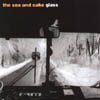 Hot on the heels of this year's full-length release, One Bedroom, The Sea and Cake continue to indulge in their newfound electronic revelry with this seven-track EP. Glass,which clocks in at just over 37 minutes, is comprised of four non-albumtracks and three remixes of songs from the album. Versions One and Twoof "To the Author" carry the synth melodies one step further thansimilarly constructed tracks on One Bedroom. The tempo isnoticably quicker than the usual Sea and Cake fare, and buzzing,spacious keyboards (which sound much like those used recently on theirplayful cover of David Bowie's "Sound and Vision") provide an excellentcompliment to the processed guitars and Sam Prekop's bouncy vocals."Traditional Wax Coin" goes in a slightly different direction with achilled-out—even minimal—jazz infusion. "An Echo In," which is closestin style to their latest album, has nice melody and instrumentation,but ultimately suffers from flat, lukewarm vocals. The remixes are doneby kindred indie spirits Stereolab and Broadcast (the latter of whomThe Sea and Cake toured with in 2000), and Detroit technohead CarlCraig. Stereoab's "Tea and Cake" remix of "Hotel Tell" strips theoriginal down to a lush, exotic lullabye, while Broadcast lend"Interiors" a heavy dose of their own tripped-out, psychedelia withloads of reverb and shards of synths. Craig's reworking of "Hotel Tell"turns the original into an ass-shakin', bass-thumping dancefloor cut,which is bound to ellicit either a chuckle or a shudder from longtimefans of the band.
Hot on the heels of this year's full-length release, One Bedroom, The Sea and Cake continue to indulge in their newfound electronic revelry with this seven-track EP. Glass,which clocks in at just over 37 minutes, is comprised of four non-albumtracks and three remixes of songs from the album. Versions One and Twoof "To the Author" carry the synth melodies one step further thansimilarly constructed tracks on One Bedroom. The tempo isnoticably quicker than the usual Sea and Cake fare, and buzzing,spacious keyboards (which sound much like those used recently on theirplayful cover of David Bowie's "Sound and Vision") provide an excellentcompliment to the processed guitars and Sam Prekop's bouncy vocals."Traditional Wax Coin" goes in a slightly different direction with achilled-out—even minimal—jazz infusion. "An Echo In," which is closestin style to their latest album, has nice melody and instrumentation,but ultimately suffers from flat, lukewarm vocals. The remixes are doneby kindred indie spirits Stereolab and Broadcast (the latter of whomThe Sea and Cake toured with in 2000), and Detroit technohead CarlCraig. Stereoab's "Tea and Cake" remix of "Hotel Tell" strips theoriginal down to a lush, exotic lullabye, while Broadcast lend"Interiors" a heavy dose of their own tripped-out, psychedelia withloads of reverb and shards of synths. Craig's reworking of "Hotel Tell"turns the original into an ass-shakin', bass-thumping dancefloor cut,which is bound to ellicit either a chuckle or a shudder from longtimefans of the band. Aaron Funk is a musical sadist, and a prolific one. His predilectionfor relentless, uncompromising breakbeats has gained his main musicaloutlet Venetian Snares a lot of cred among fans of power electronics,drum n' bass and hardcore industrial. Dubbed "drill n' bass" by peoplewho like to name things, Venetian Snares' sound palate is not all thatfar from his electronic contemporaries Squarepusher and Aphex Twin.What Funk brings to the table that is original is a sense of sleazy,dark menace. All of his numerous albums thus far have a persistentlyviolent atmosphere, with sneaky attacks of extreme, head-poundingrhythms. He is a "trickster" of sorts, beginning a track with gentleambience or light jazz before suddenly shocking the listener with acacophony of stuttering, pulsating drum programming and bizarredialogue samples involving child murder, rape and cannibalism. Releasedearlier this year, Winter in the Belly of a Snake follows in this tradition, but is somewhat of a departure from the tried-and-true Snares formula perfected on 2001's Doll Doll Doll.There is an increased emphasis on structured songs on this outing, andwith it comes the unexpected use of melody as the backbone for histypically schizophrenic beats. I am not altogether convinced that thisapproach really makes sense for Venetian Snares, but there are someworthy songs here. The disc opens with "Dad," a rather unconvincing odeto Funk's father that is overwhelmed by the drum programming and neverreally finds its footing. "Stairs Song" begins with a spookyhorror-soundtrack keyboard melody that eventually evolves into afull-blown splatter of distorted beats. There are some shorter,transitional synth tracks scattered throughout the album that attemptto add to the atmosphere of menace, but are basically pointless filler."Suffocate" finds a clipped, trebly beat and works in a surprisingsample of an angelic female singer, before mutating into a dark digitaldub song. Funk increases the internal drama of these songs byoccasionally interrupting the beat for queasy ambient interludes, whichleave the listener wondering when they will be attacked again by thesadistic rhythms. The album's most bizarre track is a cover of Danzig's"She," which sounds pretty much the same as the original. If Funk istrying to be funny with this odd choice of cover songs, he succeeds. Ifhe's actually trying to be serious, he fails. "Sink Snow Angel" beginswith a string melody reminiscent of the Kronos Quartet's theme to Requiem for a Dreambut quickly turns into a nightmare of Atari-on-amphetamine digitalinsanity. The disc ends with its longest track, "Icosikaipent", wherecold, phased metallic drum explosions keep threatening to turn intosomething interesting, but end up going nowhere. Winter is not a spectacular release for Aaron Funk, instead it's just another minor blip in his impressive discography.
Aaron Funk is a musical sadist, and a prolific one. His predilectionfor relentless, uncompromising breakbeats has gained his main musicaloutlet Venetian Snares a lot of cred among fans of power electronics,drum n' bass and hardcore industrial. Dubbed "drill n' bass" by peoplewho like to name things, Venetian Snares' sound palate is not all thatfar from his electronic contemporaries Squarepusher and Aphex Twin.What Funk brings to the table that is original is a sense of sleazy,dark menace. All of his numerous albums thus far have a persistentlyviolent atmosphere, with sneaky attacks of extreme, head-poundingrhythms. He is a "trickster" of sorts, beginning a track with gentleambience or light jazz before suddenly shocking the listener with acacophony of stuttering, pulsating drum programming and bizarredialogue samples involving child murder, rape and cannibalism. Releasedearlier this year, Winter in the Belly of a Snake follows in this tradition, but is somewhat of a departure from the tried-and-true Snares formula perfected on 2001's Doll Doll Doll.There is an increased emphasis on structured songs on this outing, andwith it comes the unexpected use of melody as the backbone for histypically schizophrenic beats. I am not altogether convinced that thisapproach really makes sense for Venetian Snares, but there are someworthy songs here. The disc opens with "Dad," a rather unconvincing odeto Funk's father that is overwhelmed by the drum programming and neverreally finds its footing. "Stairs Song" begins with a spookyhorror-soundtrack keyboard melody that eventually evolves into afull-blown splatter of distorted beats. There are some shorter,transitional synth tracks scattered throughout the album that attemptto add to the atmosphere of menace, but are basically pointless filler."Suffocate" finds a clipped, trebly beat and works in a surprisingsample of an angelic female singer, before mutating into a dark digitaldub song. Funk increases the internal drama of these songs byoccasionally interrupting the beat for queasy ambient interludes, whichleave the listener wondering when they will be attacked again by thesadistic rhythms. The album's most bizarre track is a cover of Danzig's"She," which sounds pretty much the same as the original. If Funk istrying to be funny with this odd choice of cover songs, he succeeds. Ifhe's actually trying to be serious, he fails. "Sink Snow Angel" beginswith a string melody reminiscent of the Kronos Quartet's theme to Requiem for a Dreambut quickly turns into a nightmare of Atari-on-amphetamine digitalinsanity. The disc ends with its longest track, "Icosikaipent", wherecold, phased metallic drum explosions keep threatening to turn intosomething interesting, but end up going nowhere. Winter is not a spectacular release for Aaron Funk, instead it's just another minor blip in his impressive discography. 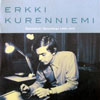 This CD is a treasure trove, mother lode, holy grail and the missinglink in the fossil record of electronic music. Kurenniemi'sachievements in the design of revolutionary instruments stand apartboth in the technical aspects and in how they introduced radically newways of making music. The recordings on this CD show just how far aheadof his time he was. It includes his own musical creations, somepromotional material for the instruments he tried to sell, someexperiments and a couple of collaborations. The breadth of the materialis so big, from sequenced Bach through tape collage to improvised tapeand feedback noise performance, that I can only mention a few. Theopening two tracks are crucial for Pan Sonic fans. They feature hisElectronic Quartet (Sähkökvartetti), a device with four instruments inone, and a huge, outrageously 90s sound. (If you doubt that Kurenniemiwas responsible for the Pan Sonic sound, try a little web research.)Kurenniemi's psychedelic tape collage, "Hana," is beautifully ugly anddream-like while the more academic sounding "Preludi" is a piercingmechanical composition in mutating repeating phrases and freeglissandi. "Virsi," another collage piece, shows off the composer'srather Finnish taste for the absurd as well as for the abstract,combining electronic sounds, various samples of voices, movies andmusic with tape effects, a long soaring multi-tone glissando, awonderful plaintive deep feedback solo. Among all the dazzlinginvention and sophistication throughout the CD it's the earliestrecording that I love the most. Inspired by the massive turbines of apower plant, "On-Off" is a live recording of Kurenniemi's manipulatingall the equipment at Helsinki University's Electronic Music Studio atonce. It's all noise with a whirring, throbbing texture, wild feedback,ripping slashes of sound and massive dynamics all with an evocativetight acoustic ambience. This absolutely brilliant recording could wellbe the prototype of modern improvised noise art performance.
This CD is a treasure trove, mother lode, holy grail and the missinglink in the fossil record of electronic music. Kurenniemi'sachievements in the design of revolutionary instruments stand apartboth in the technical aspects and in how they introduced radically newways of making music. The recordings on this CD show just how far aheadof his time he was. It includes his own musical creations, somepromotional material for the instruments he tried to sell, someexperiments and a couple of collaborations. The breadth of the materialis so big, from sequenced Bach through tape collage to improvised tapeand feedback noise performance, that I can only mention a few. Theopening two tracks are crucial for Pan Sonic fans. They feature hisElectronic Quartet (Sähkökvartetti), a device with four instruments inone, and a huge, outrageously 90s sound. (If you doubt that Kurenniemiwas responsible for the Pan Sonic sound, try a little web research.)Kurenniemi's psychedelic tape collage, "Hana," is beautifully ugly anddream-like while the more academic sounding "Preludi" is a piercingmechanical composition in mutating repeating phrases and freeglissandi. "Virsi," another collage piece, shows off the composer'srather Finnish taste for the absurd as well as for the abstract,combining electronic sounds, various samples of voices, movies andmusic with tape effects, a long soaring multi-tone glissando, awonderful plaintive deep feedback solo. Among all the dazzlinginvention and sophistication throughout the CD it's the earliestrecording that I love the most. Inspired by the massive turbines of apower plant, "On-Off" is a live recording of Kurenniemi's manipulatingall the equipment at Helsinki University's Electronic Music Studio atonce. It's all noise with a whirring, throbbing texture, wild feedback,ripping slashes of sound and massive dynamics all with an evocativetight acoustic ambience. This absolutely brilliant recording could wellbe the prototype of modern improvised noise art performance. Sorry to be the bearer of brutal truth yet again, but here goes: noiseis boring. No other known genre consists of nearly the number ofcompletely talentless assholes as noise does—not even metal! Full ofextreme tedium and seemingly unyielding emulation, the music's onlysalvation apparently comes in the form of the "originators" and the"permutators." Originators like Masami Akita (known best as Merzbow)planted the seeds and populated the genre. His own prolific outputyielded countless clones worldwide, all the while passing them bythrough revolution of medium and delivery systems as well as sound(recall the infamous car installation or the 18 CD rubber boxset).While far from innocent of releasing a significant number of unexcitingalbums over the years, Akita regularly ups the ante just enough to stayrelevant in a time where there are more useless players than ever. Satanstornade,his collaborative project with Mego artist and "permutator" RussellHaswell, is one of those releases that will keep him from fading intorelic status. Composed exclusively on two Powerbooks with unnamed,various software programs, this album celebrates the relativelyuntapped digital realm of noise. Recorded live to MiniDisc, these fourtracks show two men duking it out in anonymity, pummeling eardrums andsquealing electronically over the course of 48 viscious minutes. Thoughsonically similar, the compositions make for an interesting, albeitdifficult, listening experience. I strongly recommend giving the albuma nonstop listen to achieve the full effect. So while countlessjerkoffs continue in their attempts to recycle Music For Bondage Performance ad nauseum, Akita and Haswell successfully resuscitate the terminal patient known as noise with this blistering workout.
Sorry to be the bearer of brutal truth yet again, but here goes: noiseis boring. No other known genre consists of nearly the number ofcompletely talentless assholes as noise does—not even metal! Full ofextreme tedium and seemingly unyielding emulation, the music's onlysalvation apparently comes in the form of the "originators" and the"permutators." Originators like Masami Akita (known best as Merzbow)planted the seeds and populated the genre. His own prolific outputyielded countless clones worldwide, all the while passing them bythrough revolution of medium and delivery systems as well as sound(recall the infamous car installation or the 18 CD rubber boxset).While far from innocent of releasing a significant number of unexcitingalbums over the years, Akita regularly ups the ante just enough to stayrelevant in a time where there are more useless players than ever. Satanstornade,his collaborative project with Mego artist and "permutator" RussellHaswell, is one of those releases that will keep him from fading intorelic status. Composed exclusively on two Powerbooks with unnamed,various software programs, this album celebrates the relativelyuntapped digital realm of noise. Recorded live to MiniDisc, these fourtracks show two men duking it out in anonymity, pummeling eardrums andsquealing electronically over the course of 48 viscious minutes. Thoughsonically similar, the compositions make for an interesting, albeitdifficult, listening experience. I strongly recommend giving the albuma nonstop listen to achieve the full effect. So while countlessjerkoffs continue in their attempts to recycle Music For Bondage Performance ad nauseum, Akita and Haswell successfully resuscitate the terminal patient known as noise with this blistering workout.  It has never been more clear that David Tibet lives in a completely idiosyncratic sphere of his own. Perhaps this is true for everyone, but Tibet's world seems particularly out of step with current trends in music, culture and thought. There is something terribly admirable and beguiling about that. Hypnagogue beautifully proves that Current 93 is continuing in its tangential orbit, and exists solely as the outlet for Tibet's poetic musings on Christ, cats, children, dreams, piety, horror, death, dread, decay and apocalypse. You're not going to find any concessions to glitch-pop or retro-electro here.
It has never been more clear that David Tibet lives in a completely idiosyncratic sphere of his own. Perhaps this is true for everyone, but Tibet's world seems particularly out of step with current trends in music, culture and thought. There is something terribly admirable and beguiling about that. Hypnagogue beautifully proves that Current 93 is continuing in its tangential orbit, and exists solely as the outlet for Tibet's poetic musings on Christ, cats, children, dreams, piety, horror, death, dread, decay and apocalypse. You're not going to find any concessions to glitch-pop or retro-electro here.
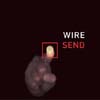 If a keyboard cowboy steals your voice it might just serve your server right for trying to read and burn the last of the Mohicans. With one foul swoop Colin Newman proclaims punk rock meaningless and declares the joy of his latest bastard 'heavy metal dancefloor' bad vibing it up like there's no tomorrow. Those four negative horsemen Wire celebrate the art of stopping, which is where it's at - addictive repetitive mega-riffing retooled on hardrive and nailed down fast in paranoiac fits.
If a keyboard cowboy steals your voice it might just serve your server right for trying to read and burn the last of the Mohicans. With one foul swoop Colin Newman proclaims punk rock meaningless and declares the joy of his latest bastard 'heavy metal dancefloor' bad vibing it up like there's no tomorrow. Those four negative horsemen Wire celebrate the art of stopping, which is where it's at - addictive repetitive mega-riffing retooled on hardrive and nailed down fast in paranoiac fits.
 The straight-ahead pop music on this German trio's self-titled secondrelease tends to be based on the instrumentation of bass, drums, guitarand vocals with a leaning towards some electronic augmentation.Although the presence of synthesizer can be fairly liberal at timeswith a hint of drum machine, there's no great risk of it being overusedas it always seems appropriate within the context. Their choices ofcertain chordal intervals paired with obvious guitar and synth patchesat times remind me of some of the more mainstream British bands of the80s, which is a good thing. "Untem im Strom" leads off the disc with achoppy, jangly guitar progression matched with vocals that sneaks inthe rhythm section on the upbeat to steadily drive the tune through itsmarked sections. Of the disc's ten tracks, the dance-pulsed, graduallyrocking "Tremble" would be the only one sung entirely in English withthe remainder mostly in the group's native tongue. The cadence of thevocal delivery for some numbers feels a bit awkward at first until themelody becomes the focal point and the music settles in around it. Thewhispy vocals, strummy acoustic guitar and plucked bass of "Hannover"is lead by a steady, puffy-snared drum machine while mild pianoflourishes and buzzing slide guitar trickle throughout. "Stop" thrashesalong to bursts of siren keyboards, pounding tom-toms and dirty basswhich shift from jagged to slick and back again within the span of itsseventy-five seconds. Go Plus' musicianship is solid and theirsongwriting style is fairly consistent from track to track with somefairly cool progressions and hooks. For the most part, these keyelements are underused but there are some worthwhile moments.
The straight-ahead pop music on this German trio's self-titled secondrelease tends to be based on the instrumentation of bass, drums, guitarand vocals with a leaning towards some electronic augmentation.Although the presence of synthesizer can be fairly liberal at timeswith a hint of drum machine, there's no great risk of it being overusedas it always seems appropriate within the context. Their choices ofcertain chordal intervals paired with obvious guitar and synth patchesat times remind me of some of the more mainstream British bands of the80s, which is a good thing. "Untem im Strom" leads off the disc with achoppy, jangly guitar progression matched with vocals that sneaks inthe rhythm section on the upbeat to steadily drive the tune through itsmarked sections. Of the disc's ten tracks, the dance-pulsed, graduallyrocking "Tremble" would be the only one sung entirely in English withthe remainder mostly in the group's native tongue. The cadence of thevocal delivery for some numbers feels a bit awkward at first until themelody becomes the focal point and the music settles in around it. Thewhispy vocals, strummy acoustic guitar and plucked bass of "Hannover"is lead by a steady, puffy-snared drum machine while mild pianoflourishes and buzzing slide guitar trickle throughout. "Stop" thrashesalong to bursts of siren keyboards, pounding tom-toms and dirty basswhich shift from jagged to slick and back again within the span of itsseventy-five seconds. Go Plus' musicianship is solid and theirsongwriting style is fairly consistent from track to track with somefairly cool progressions and hooks. For the most part, these keyelements are underused but there are some worthwhile moments. Hordes of NYC hipsters already know that the "mutant disco" punk/dancehybrid sound of the early 80's is experiencing a major resurgence ofinterest. The original heroes of the genre—bands like Liquid Liquid, 23Skidoo, A Certain Ratio, and Gang of Four—are being excavated andre-released. Inevitably, a legion of new artists are having a lot offun rediscovering these sounds and making their own form of retrodance/punk, with uneven results. Trevor Jackson's Output Recordings,home to a cadre of retro-disco and new-new-wave artists, have jumped onthis bandwagon in a big way. Trying to make their own 21st centuryversion of the seminal Disco not Disco compilation, Output has assembled some of the best songs and 12" mixes on the label for their Channel 2comp. The disc opens with 7 Hurtz' "Malibu," a shimmering retro-housetrack which tries (and fails) to sound like FPU's "Ocean Drive."Manhead's "Doop" is a fantastically corny bebop jazz-disco hybrid thatrecalls Miles Davis' ill-advised foray into dance and hiphop.Blackstrobe's dancefloor-stormer "Me and Madonna" is on the verge ofsounding like Gina X Performance's "Nice Mover," but eventuallydeclines into electroclash cliches. Possibly the best reason to buythis compilation is the only appearance of LCD Soundsystem's "Losing MyEdge" on CD. For those who don't already know, "Losing My Edge" is thefunniest, most infectious 12" dance single to be released in recentmemory. Over retardedly low-fi beatbox and bass hits, the DFA's JamesMurphy does a Mark E. Smith-style monologue boasting all of his hipstercredentials: he was there at the first Can show, he was there at theParadise Garage with Larry Levan, he was the first to play Daft Punk atCBGB's. At the end of the song, he yells out a hilarious roll-call ofevery so-called "hip" artist from the past thirty years: "This Heat,Pere Ubu, The Human League, The Normal, Lou Reed..." and etc. adnauseum. By removing the minor-key bassline andupping the disco quotient for their 12" re-recording of "Olio," NYCpunk-disco band The Rapture manage to sound a little less like The Curethan the song's first appearance on their debut Mirror. TheZongamin remix of Playgroup's underground dance hit "Make it Happen" isawesome, pushing the intensely rhythmic ESG-style sassiness that theoriginal only hinted at. Dempsey's "ODB on the Run" is a chaoticallyfunny avant-dance track about Big Baby Jesus' run-in with the law andthe disc ends with a weirdly out-of-place, laptop-treated guitar balladby The Boy Lucas. Like most compilations of this sort, this is aninconsistent listen with a few gems that may or may not be worth theprice.
Hordes of NYC hipsters already know that the "mutant disco" punk/dancehybrid sound of the early 80's is experiencing a major resurgence ofinterest. The original heroes of the genre—bands like Liquid Liquid, 23Skidoo, A Certain Ratio, and Gang of Four—are being excavated andre-released. Inevitably, a legion of new artists are having a lot offun rediscovering these sounds and making their own form of retrodance/punk, with uneven results. Trevor Jackson's Output Recordings,home to a cadre of retro-disco and new-new-wave artists, have jumped onthis bandwagon in a big way. Trying to make their own 21st centuryversion of the seminal Disco not Disco compilation, Output has assembled some of the best songs and 12" mixes on the label for their Channel 2comp. The disc opens with 7 Hurtz' "Malibu," a shimmering retro-housetrack which tries (and fails) to sound like FPU's "Ocean Drive."Manhead's "Doop" is a fantastically corny bebop jazz-disco hybrid thatrecalls Miles Davis' ill-advised foray into dance and hiphop.Blackstrobe's dancefloor-stormer "Me and Madonna" is on the verge ofsounding like Gina X Performance's "Nice Mover," but eventuallydeclines into electroclash cliches. Possibly the best reason to buythis compilation is the only appearance of LCD Soundsystem's "Losing MyEdge" on CD. For those who don't already know, "Losing My Edge" is thefunniest, most infectious 12" dance single to be released in recentmemory. Over retardedly low-fi beatbox and bass hits, the DFA's JamesMurphy does a Mark E. Smith-style monologue boasting all of his hipstercredentials: he was there at the first Can show, he was there at theParadise Garage with Larry Levan, he was the first to play Daft Punk atCBGB's. At the end of the song, he yells out a hilarious roll-call ofevery so-called "hip" artist from the past thirty years: "This Heat,Pere Ubu, The Human League, The Normal, Lou Reed..." and etc. adnauseum. By removing the minor-key bassline andupping the disco quotient for their 12" re-recording of "Olio," NYCpunk-disco band The Rapture manage to sound a little less like The Curethan the song's first appearance on their debut Mirror. TheZongamin remix of Playgroup's underground dance hit "Make it Happen" isawesome, pushing the intensely rhythmic ESG-style sassiness that theoriginal only hinted at. Dempsey's "ODB on the Run" is a chaoticallyfunny avant-dance track about Big Baby Jesus' run-in with the law andthe disc ends with a weirdly out-of-place, laptop-treated guitar balladby The Boy Lucas. Like most compilations of this sort, this is aninconsistent listen with a few gems that may or may not be worth theprice.- LCD Soundsystem - Losing My Edge
- The Rapture - Olio
- Playgroup - Make It Happen (Zongamin Remix)
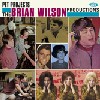 I am definitely and unashamedly one of the legion of obsessive fans ofBrian Wilson. I wholeheartedly agree with all of the critics who nevertire of declaring Wilson a genius of pop songcraft and production. Ihave faithfully collected all the prime Beach Boys material—LPreissues, box sets, 45s, live albums, bootlegs, "Best Of" albums, etc.To my already absurd Wilson collection, I can now add this interestingarchival disc, recently released by Ace Records of London. Ace Recordsis a label for music collectors and junkies, specializing inre-releases of forgotten rock n' roll treasures and lost musicalexotica from the 18's and 60's. This disc may be their mostirresistable release yet, as it is the first to compile all of thenon-Beach Boys material produced by Brian Wilson in his sixties heyday.Someone has obviously gone to a lot of trouble to track down all thoserare 45s and lesser-known one-off projects. As an archival compilation,Pet Projectsis unparalleled. As a listening experience, however, the disc issomewhat more problematic. It is a pure pleasure to hear the first twotracks, a pair of Phil Spector-influenced teenage symphonies performedby Sharon Marie, a girlfriend of Beach Boy Mike Love. Wilson and Love'smediocre ballads are transformed by Brian's studio genius intoover-the-top orchestral blowouts, matching (and often exceeding) thebar set by Spector, Brian's hero and a huge influence on the evolutionof his studio sound. It's hard to remember that forty years before hestarted murdering B-movie actresses, Phil Spector was the innovator ofstudio-created, multi-layered pop masterpieces that influenced ageneration of producers. Spector and Wilson became the first "star"producers—their production genius was recognized as the primary elementof the music, more important than the song or the singer. Wilson andthree of his friends called themselves The Survivors, and cut a one-offsingle "Pamela Jean" with the instrumental b-side "After the Game." Thea-side recalls the classic Beach Boys sound of "Help Me, Rhonda," butthe b-side is an early preview of the complex, emotive instrumentaltracks that Brian would write and produce for Pet Sounds a couple yearslater. There is also a glimpse here of Brian Wilson, the acid casualty:Dean Torrance (of surf-pop duo Jan & Dean), using the fictitiousband name The Lauging Gravy, recorded a version of Brian's psychedelicbarbershop quartet song "Vegetables," originally recorded for thenever-completed Smile. The song sounds just as bizarre here as on the numerous Smilebootlegs. The rest of the disc is dominated by 45s released by Wilson'sgirl groups The Honeys, Rachel and the Revolvers and American Spring.Although most of these groups are long-forgotten for good reasons,there is a naive charm and excitement to songs like "Pray for Surf" and"He's a Doll" that recall everything that is wonderful and beguilingabout the girl groups of the early sixties. These songs would not beout of place on Music for Pussycats (the Boyd Rice-compiled love-letter to girl-group pop). Pet Projects is a unique, if somewhat frustrating, look back at the "lost" treasures of one of pop music's most fascinating talents.
I am definitely and unashamedly one of the legion of obsessive fans ofBrian Wilson. I wholeheartedly agree with all of the critics who nevertire of declaring Wilson a genius of pop songcraft and production. Ihave faithfully collected all the prime Beach Boys material—LPreissues, box sets, 45s, live albums, bootlegs, "Best Of" albums, etc.To my already absurd Wilson collection, I can now add this interestingarchival disc, recently released by Ace Records of London. Ace Recordsis a label for music collectors and junkies, specializing inre-releases of forgotten rock n' roll treasures and lost musicalexotica from the 18's and 60's. This disc may be their mostirresistable release yet, as it is the first to compile all of thenon-Beach Boys material produced by Brian Wilson in his sixties heyday.Someone has obviously gone to a lot of trouble to track down all thoserare 45s and lesser-known one-off projects. As an archival compilation,Pet Projectsis unparalleled. As a listening experience, however, the disc issomewhat more problematic. It is a pure pleasure to hear the first twotracks, a pair of Phil Spector-influenced teenage symphonies performedby Sharon Marie, a girlfriend of Beach Boy Mike Love. Wilson and Love'smediocre ballads are transformed by Brian's studio genius intoover-the-top orchestral blowouts, matching (and often exceeding) thebar set by Spector, Brian's hero and a huge influence on the evolutionof his studio sound. It's hard to remember that forty years before hestarted murdering B-movie actresses, Phil Spector was the innovator ofstudio-created, multi-layered pop masterpieces that influenced ageneration of producers. Spector and Wilson became the first "star"producers—their production genius was recognized as the primary elementof the music, more important than the song or the singer. Wilson andthree of his friends called themselves The Survivors, and cut a one-offsingle "Pamela Jean" with the instrumental b-side "After the Game." Thea-side recalls the classic Beach Boys sound of "Help Me, Rhonda," butthe b-side is an early preview of the complex, emotive instrumentaltracks that Brian would write and produce for Pet Sounds a couple yearslater. There is also a glimpse here of Brian Wilson, the acid casualty:Dean Torrance (of surf-pop duo Jan & Dean), using the fictitiousband name The Lauging Gravy, recorded a version of Brian's psychedelicbarbershop quartet song "Vegetables," originally recorded for thenever-completed Smile. The song sounds just as bizarre here as on the numerous Smilebootlegs. The rest of the disc is dominated by 45s released by Wilson'sgirl groups The Honeys, Rachel and the Revolvers and American Spring.Although most of these groups are long-forgotten for good reasons,there is a naive charm and excitement to songs like "Pray for Surf" and"He's a Doll" that recall everything that is wonderful and beguilingabout the girl groups of the early sixties. These songs would not beout of place on Music for Pussycats (the Boyd Rice-compiled love-letter to girl-group pop). Pet Projects is a unique, if somewhat frustrating, look back at the "lost" treasures of one of pop music's most fascinating talents. - Sharon Marie - Run-Around Lover
- The Survivors - After the Game
- The Laughing Gravy - Vegetables
Silber The many styles of Jon DeRosa are on full display these days, with new albums from Pale Horse and Rider and this project being released so close to each other. Where DeRosa is getting a lot of press these days for PHaR, it is Aarktica that started his journey into somber melodies, though for his latest, it seems the more song-like structure of the former informs the latter. Pure Tone Audiometryrefers to a hearing test that DeRosa had when he lost the hearing in his right ear several years ago. It is also the most rock-oriented of DeRosa's releases. Where previous Aarktica recordings were primarily drone and buzz, and PHaR very acoustic and downbeat, this music is full-sounding, almost playful in places, and very mapped-out. Sounds appear and disappear, spliced in and out with the skill of a surgeon, and everything dances around your ears like it was born to be there. The chilling vocals on the opening track almost drown out the science film wild track, and altogether it sounds like a chorus of technology, humanity, and the otherworldly. Elsewhere, the electro-pop returns, with electric guitar, programmed beats, and the sullen but liquid voice of DeRosa gracing the other tones. Then, real drums snap into focus, and the sound of a full band, something unheard of Aarktica releases, fills the speakers and pulses with raw energy. The harmony chorus vocals all over the record breathe real life into this material, so much so that it alone almost eclipses all his other work. This is not to say that DeRosa has left behind his old devices, as"Snowstorm Ruins Birthday" and "Water Wakes Dead Cells" clearly display. He has, however, found a growth, a leap forward, that was not expected, but certainly most welcome.
The many styles of Jon DeRosa are on full display these days, with new albums from Pale Horse and Rider and this project being released so close to each other. Where DeRosa is getting a lot of press these days for PHaR, it is Aarktica that started his journey into somber melodies, though for his latest, it seems the more song-like structure of the former informs the latter. Pure Tone Audiometryrefers to a hearing test that DeRosa had when he lost the hearing in his right ear several years ago. It is also the most rock-oriented of DeRosa's releases. Where previous Aarktica recordings were primarily drone and buzz, and PHaR very acoustic and downbeat, this music is full-sounding, almost playful in places, and very mapped-out. Sounds appear and disappear, spliced in and out with the skill of a surgeon, and everything dances around your ears like it was born to be there. The chilling vocals on the opening track almost drown out the science film wild track, and altogether it sounds like a chorus of technology, humanity, and the otherworldly. Elsewhere, the electro-pop returns, with electric guitar, programmed beats, and the sullen but liquid voice of DeRosa gracing the other tones. Then, real drums snap into focus, and the sound of a full band, something unheard of Aarktica releases, fills the speakers and pulses with raw energy. The harmony chorus vocals all over the record breathe real life into this material, so much so that it alone almost eclipses all his other work. This is not to say that DeRosa has left behind his old devices, as"Snowstorm Ruins Birthday" and "Water Wakes Dead Cells" clearly display. He has, however, found a growth, a leap forward, that was not expected, but certainly most welcome.
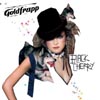 When I learned several months ago that Goldfrapp's forthcoming second album was to be titled Black Cherry,my first thought was how fitting of a title it would be. After fallingin love with the sweet, dark, succulent meoldies on their outstandingdebut, Felt Mountain, I anticipated hearing what the band hadbeen up to in the studio for the past two and a half years. It seemsthat in the interim, Alison Goldfrapp and Will Gregory have largelychanged their style. Straying from the moody, cinematic quality oftheir previous record, Black Cherry is a synth-driven,erotically-charged collection of songs combining Giorgio Moroder, Add Nto [X] and Olivia Newton-John circa 1979. Even Alison herself hasundergone a makeover: gone are the Heidi braids and muddy rubberboots—the eye-catching photo of her inside the sleeve reflects a crossbetween Elegant Gothic Lolita and Dorothy of Kansas.
When I learned several months ago that Goldfrapp's forthcoming second album was to be titled Black Cherry,my first thought was how fitting of a title it would be. After fallingin love with the sweet, dark, succulent meoldies on their outstandingdebut, Felt Mountain, I anticipated hearing what the band hadbeen up to in the studio for the past two and a half years. It seemsthat in the interim, Alison Goldfrapp and Will Gregory have largelychanged their style. Straying from the moody, cinematic quality oftheir previous record, Black Cherry is a synth-driven,erotically-charged collection of songs combining Giorgio Moroder, Add Nto [X] and Olivia Newton-John circa 1979. Even Alison herself hasundergone a makeover: gone are the Heidi braids and muddy rubberboots—the eye-catching photo of her inside the sleeve reflects a crossbetween Elegant Gothic Lolita and Dorothy of Kansas."Train," the first single from the album, is bound for dancefloor fame.Alison is in full-on diva mode, and the thumping bassline and jaggedsynth rhythms are bound to make jaws drop from those who were expectingthe subtlety found on tracks like "Utopia" from Goldfrapp's debut. Thistrack is followed by the title cut, a meandering, bland mix ofuninspired string arrangements and monotone vocals. It is evidence ofone of the album's weak spot: the down-tempo songs, like this, "HairyTrees" and "Forever," are sappy and nearly indistinguishable. This timearound, Goldfrapp seem to be much more comfortable when they're overt.Their sexual themes lyrically reflect this as well, and have beenexpanded from Felt Mountainnearly to the point of being gratuitous. Hints of eroticism found onthe previous record have become morphed into naughtily playful lyricslike "put your dirty angel face / between my legs and knicker lace" onone of the strongest tracks, "Twist." Meanwhile, "Strict Machine"features a sexy beat throughout that resembles the cracking of a whip.
All in all, while Black Cherryis wholly entertaining, it does not bring to bear the inventiveness andemotional power of its predecessor. Additionally, Alison's voice doesnot show the range she's capable of (no yodeling this time around),although musically, the synths are very expertly and creatively handledby the duo. At its best, it's a sweet, dark, succulent pop record, butif you're searching for something mindblowing, best not to look here.
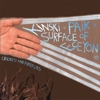 Part two in The Music Fellowship Triptychs series finds more of thesame beautiful instrumental noise rock, just from different talents.Kinski, Paik, and Surface of Eceyon have all gained acclaim for theirindividual and unique contributions to the drone rock landscape, thatis becoming more of a pastiche these days. All the groups havedifferent sounds when listened to separately, but together, as they arein this series, they tend to sound very much the same. This is notnecessarily a mark against them, however, as the more the music has thesame organic feel and structure, the more it comes off as a cohesiverelease and therefore more palatable. All three bands have newfull-length records coming out on separate labels later in the year,and if this EP is any indication those records could level a city. Onthe cleverly-titled "Keep Clear of Me, I Am Maneuvering WithDifficulty," Kinski continues with their typical sonic explorations,this time in one track with three separate movements. Completelyimprovised, the music blends nicely into each piece, slowly building tostart, then unleashing in a crushing rhythm and a bleeding, wailingdistortion of guitars. It annoys successfully, even while it impresses,then fades out in a lovely buzz and tremble meld of organ and synthsounds, as if the song wants to give your ears a salve. Paik doesn'twade in at all, just menaces with a brooding bassline and feedback.Echoed guitars join to up the noise factor, and then the hammer fallswith the measured persistence of the drums. Paik's second song, "Eva,"is lighter in tone, but a well-crafted selection that leads well intothe music of Surface of Eceyon. With no explanation as to the slightchange in their name (nor an explanation as to why both spellingsappear in the booklet), this brave collaboration between members ofLanding and Yume Bitsu with Phil Jenkins gives a taste of theirconception in their composition. "Concert of Stars" was recorded duringone of the band's early sessions together, though it sounds like anevolution of sound. Pure improvisation from the vessyl informs theirinstruments and minds to create a thirty-minute opus of ambient beauty.It certainly bears an appropriate name, too, as I could easily enjoy avisit to the planetarium if this was the soundtrack. This second partof the Tryyptych Series rivals the first and is worth a concentratedlisten, even if some of the music is better absorbed then heard.
Part two in The Music Fellowship Triptychs series finds more of thesame beautiful instrumental noise rock, just from different talents.Kinski, Paik, and Surface of Eceyon have all gained acclaim for theirindividual and unique contributions to the drone rock landscape, thatis becoming more of a pastiche these days. All the groups havedifferent sounds when listened to separately, but together, as they arein this series, they tend to sound very much the same. This is notnecessarily a mark against them, however, as the more the music has thesame organic feel and structure, the more it comes off as a cohesiverelease and therefore more palatable. All three bands have newfull-length records coming out on separate labels later in the year,and if this EP is any indication those records could level a city. Onthe cleverly-titled "Keep Clear of Me, I Am Maneuvering WithDifficulty," Kinski continues with their typical sonic explorations,this time in one track with three separate movements. Completelyimprovised, the music blends nicely into each piece, slowly building tostart, then unleashing in a crushing rhythm and a bleeding, wailingdistortion of guitars. It annoys successfully, even while it impresses,then fades out in a lovely buzz and tremble meld of organ and synthsounds, as if the song wants to give your ears a salve. Paik doesn'twade in at all, just menaces with a brooding bassline and feedback.Echoed guitars join to up the noise factor, and then the hammer fallswith the measured persistence of the drums. Paik's second song, "Eva,"is lighter in tone, but a well-crafted selection that leads well intothe music of Surface of Eceyon. With no explanation as to the slightchange in their name (nor an explanation as to why both spellingsappear in the booklet), this brave collaboration between members ofLanding and Yume Bitsu with Phil Jenkins gives a taste of theirconception in their composition. "Concert of Stars" was recorded duringone of the band's early sessions together, though it sounds like anevolution of sound. Pure improvisation from the vessyl informs theirinstruments and minds to create a thirty-minute opus of ambient beauty.It certainly bears an appropriate name, too, as I could easily enjoy avisit to the planetarium if this was the soundtrack. This second partof the Tryyptych Series rivals the first and is worth a concentratedlisten, even if some of the music is better absorbed then heard.- Kinski - Keep Clear of Me, I Am Maneuvering With Difficulty
- Paik - Spanish Holiday
- Surface of Eceyon - Concert of Stars
 At one time the main focus in hip hop music were the MCs; their socialand (at times) political messages relayed with quick-cut rhymes, cleverwordplay and attitude over a cool, sampled yet repetitive backingtrack. Over the last bunch of years, the role of DJ/producer has gainedas much, if not more attention than their MC counterparts, which, inturn, has pushed the envelope of the genre. With One Word Extinguisher,the second full length release as Prefuse 73, multi-aliased producerScott Herren continues to creatively fuse hip hop beats and samplingwith certain elements of electronic music to form a uniquecompositional style. A disc of mostly instrumental tracks, Herrenenlists the MC skills of Diverse to drive the synth-gurgling of"Plastic" and a brief rhythmic social commentary from Mr. Lif on theominous progressions of "Huevos With Jeff and Rani." The use of clippedvocal textures and spoken word samples also factor in throughout thedisc's 23 tracks. The steady polyrhythmic beat shifting of "The Colorof Tempo" plays off a choppy melody played by what could either be atwisted soprano saxophone sample or a really warbly synth patch for anupdate on some '70s instrumental soul music. Teaming with fellowproducer Daedelus, the speedy keyboard tremolo and human beatboxpropelled "Busy Signal (Make You Go Bombing Mix)" swells with stringsamples and sneaks in some bass clarinet for an upbeat yet surprisinglyeerie mix. The simple rhythm section groove supporting a sampledsaxophone motif, strings and simple xylophone on "Perverted Undertone"come across as paramount in feel for one of the disc's more subtlehighlights. Skateboarding legend Tommy Guerrero lends his soulfulmulti-tracked guitar playing to "Strom Returns" as the latin-jazzelement in the hip hop concept. Herren continues to update up the usualstraight-ahead beats with his clever use polyrhythmics as heard on lastyear's The '92 vs '02 Collection EP and the percussive sampling style from his Vocal Studies + Uprock Narrativesdebut. Over the span of sixty minutes, the tunes move between flashesof excitement and some great compositional grooves with a fewinterludes that give the disc a natural flow. With Prefuse 73 currentlyon tour, this new material will make a great live set even moreentertaining.
At one time the main focus in hip hop music were the MCs; their socialand (at times) political messages relayed with quick-cut rhymes, cleverwordplay and attitude over a cool, sampled yet repetitive backingtrack. Over the last bunch of years, the role of DJ/producer has gainedas much, if not more attention than their MC counterparts, which, inturn, has pushed the envelope of the genre. With One Word Extinguisher,the second full length release as Prefuse 73, multi-aliased producerScott Herren continues to creatively fuse hip hop beats and samplingwith certain elements of electronic music to form a uniquecompositional style. A disc of mostly instrumental tracks, Herrenenlists the MC skills of Diverse to drive the synth-gurgling of"Plastic" and a brief rhythmic social commentary from Mr. Lif on theominous progressions of "Huevos With Jeff and Rani." The use of clippedvocal textures and spoken word samples also factor in throughout thedisc's 23 tracks. The steady polyrhythmic beat shifting of "The Colorof Tempo" plays off a choppy melody played by what could either be atwisted soprano saxophone sample or a really warbly synth patch for anupdate on some '70s instrumental soul music. Teaming with fellowproducer Daedelus, the speedy keyboard tremolo and human beatboxpropelled "Busy Signal (Make You Go Bombing Mix)" swells with stringsamples and sneaks in some bass clarinet for an upbeat yet surprisinglyeerie mix. The simple rhythm section groove supporting a sampledsaxophone motif, strings and simple xylophone on "Perverted Undertone"come across as paramount in feel for one of the disc's more subtlehighlights. Skateboarding legend Tommy Guerrero lends his soulfulmulti-tracked guitar playing to "Strom Returns" as the latin-jazzelement in the hip hop concept. Herren continues to update up the usualstraight-ahead beats with his clever use polyrhythmics as heard on lastyear's The '92 vs '02 Collection EP and the percussive sampling style from his Vocal Studies + Uprock Narrativesdebut. Over the span of sixty minutes, the tunes move between flashesof excitement and some great compositional grooves with a fewinterludes that give the disc a natural flow. With Prefuse 73 currentlyon tour, this new material will make a great live set even moreentertaining.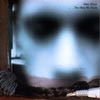 Senses develop with age. As a child, we tend to have a limited palette,with a strong preference for sweets and simple things. It's hard toenjoy something that can be bitter yet addictively desirable likealcohol, cigars, or raw fish. Likewise, it's also difficult toappreciate and fall in love with artwork that can be both incrediblysad yet stunningly beautiful all at the same time. With age, MattElliott has shed his Third Eye Foundation guise, stripped the layers ofdistortion, aggressive percussion, snotty song title humor, and theresult is beyond imagination. The Mess We Madeopens like an offpitch phonograph with twisted piano and hornsounds—muted, surrealistic, and ectoplasmic—accompanying his faint andghostly voice. (That in mind, it's hardly a surprise that the artworklooks more like a Brothers Quay production than ever before!) It's sad,mildy horrific, but captivating, almost as if Elliot is crawlingthrough the layers of freshly packed dirt from being mistakenly buriedalive. Over the course of the next seven complex miniaturemasterpieces, only rarely are electronic beats introduced, and whileit's not difficult to conecptually connect the dots to moments on thefinal Third Eye Foundation release, Little Lost Soul, it'stough to imagine this is the same person who cranked out some of themost clumsy, distorted noises on releases as far back as 1997's Ghost. Perhaps being a dad is what forced him to be quiet and work late at night, as The Messis very quiet, late night listening material. Tinkling melodiesfrequently play like cinematic themes by worn out music boxes,meandering in and out, mostly without rigid metronomic beats, allprovided by the deft multilayering of Elliot's voice, guitar, piano,bells, accordion (or melodica), and other instrument playing (with theexception of a couple female vocal bits here and there). Transitionsbetween drastically contrasting movements (from the beat-less score topost-drum 'n bass to a sea chanty) are amazingly seamless and fluid,and the eerie feel is never lost or compromised. With every listen Ifind myself surprised, frequently having to do double takes, kind oflike a book where you keep asking yourself "did I really just readthat?" Thanks to the power of media playback, rewinding andre-listening is possible, but like a David Lynch film, it's best toforce yourself to just sit there and soak in the whole damned thingstart to finish.
Senses develop with age. As a child, we tend to have a limited palette,with a strong preference for sweets and simple things. It's hard toenjoy something that can be bitter yet addictively desirable likealcohol, cigars, or raw fish. Likewise, it's also difficult toappreciate and fall in love with artwork that can be both incrediblysad yet stunningly beautiful all at the same time. With age, MattElliott has shed his Third Eye Foundation guise, stripped the layers ofdistortion, aggressive percussion, snotty song title humor, and theresult is beyond imagination. The Mess We Madeopens like an offpitch phonograph with twisted piano and hornsounds—muted, surrealistic, and ectoplasmic—accompanying his faint andghostly voice. (That in mind, it's hardly a surprise that the artworklooks more like a Brothers Quay production than ever before!) It's sad,mildy horrific, but captivating, almost as if Elliot is crawlingthrough the layers of freshly packed dirt from being mistakenly buriedalive. Over the course of the next seven complex miniaturemasterpieces, only rarely are electronic beats introduced, and whileit's not difficult to conecptually connect the dots to moments on thefinal Third Eye Foundation release, Little Lost Soul, it'stough to imagine this is the same person who cranked out some of themost clumsy, distorted noises on releases as far back as 1997's Ghost. Perhaps being a dad is what forced him to be quiet and work late at night, as The Messis very quiet, late night listening material. Tinkling melodiesfrequently play like cinematic themes by worn out music boxes,meandering in and out, mostly without rigid metronomic beats, allprovided by the deft multilayering of Elliot's voice, guitar, piano,bells, accordion (or melodica), and other instrument playing (with theexception of a couple female vocal bits here and there). Transitionsbetween drastically contrasting movements (from the beat-less score topost-drum 'n bass to a sea chanty) are amazingly seamless and fluid,and the eerie feel is never lost or compromised. With every listen Ifind myself surprised, frequently having to do double takes, kind oflike a book where you keep asking yourself "did I really just readthat?" Thanks to the power of media playback, rewinding andre-listening is possible, but like a David Lynch film, it's best toforce yourself to just sit there and soak in the whole damned thingstart to finish. 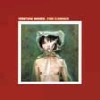 Venetian Snares' latest release is a sequel of sorts to his best album, 2001's masterpiece of hardcore electronic sadism Doll Doll Doll.That album had a cohesive theme and a powerful diabolical precisionthat Aaron Funk has never matched, though he has released many finealbums since. Find Candace picks up where Doll Doll Dollleft off, and exacts a virtuoso sonic attack that matches the originalfor its sheer adrenaline rush of sound. Much like injecting crystalmeth directly into the jugular vein, this feels dirty and dangerous,and at high volume it has the ability to quicken the pulse and make thepalms sweat. The agitation begins with the first track, an incredibleremix of "Befriend a Child Killer." Stuttering, hyper-accelerated drumn' bass hits are coaxed out, a little at a time, until the songexplodes like a money shot in the face with a splattered wall ofscattershot rhythms and mind-wrenching acid lines. One of those genericdancehall singers that always heard in hardcore jungle songs pipes in,but his voice has been pitched down and distorted to sound monstrousand Satanic. This is extremely scary music that immediately puts toshame most of the self-consciously transgressive industrial music madefor in recent years. Aaron Funk's menacing, soulless music reminds meof the experience of hearing Too Dark Park and Last Rights-eraSkinny Puppy in my high school days as I was unprepared to hearsomething so dark and relentlessly aggressive and amoral. The music isdevoid of all emotion other than a raw, pulsating desire for Dionysianthrills and hyperspeed excitement, like a digital version of Slayer'smasterpiece Reign in Blood. The second track "Mercy Funk" isthe Snares' attempt to make a pounding rave anthem that is designed tokill any ravers that attempt to dance to it. Listening to theseven-minute "Find Candace" is like the experience taking a walk in thepark at night, witnessing a gang rape in progress, and joining in.Later, you feel remorse, so you go to a church. Suddenly, you have achange of heart and decide to burn the church down, run out into thestreet and howl at the moon. "Yor" begins as an ominous ambient trackconstructed from multitracked voices a la Gyorgi Ligeti, but it quicklyslaps you in the face with deep, percussive punches and samples ofmuffled graveyard screams. The brilliant "Children's Limbo" is thesuccessor to Doll Doll Doll's best track "Dollmaker". The trackbegins with a British child describing the four levels of hell againstan innocently funky breakbeat, but soon the scary synthesizer squealsoff into the drum n' bass inferno once again. "Dolleater" begins with aseries of high-pitched, strident tones and quickly becomes an orgy ofunfocused rage, penetrating the eardrums with an ecstasy of percussivepunishment. The album ends with the mercifully short "Blind Candace," abaroque pipe organ melody which segues into a kind of stop-start deathmetal dirge, complete with live drums and twisted screams. A trumpetcalls out desparately, and I am left wondering what the hell Aaron Funkhas managed to do to my mind. I must go out and find a small,innocent-looking child to defile now. -
Venetian Snares' latest release is a sequel of sorts to his best album, 2001's masterpiece of hardcore electronic sadism Doll Doll Doll.That album had a cohesive theme and a powerful diabolical precisionthat Aaron Funk has never matched, though he has released many finealbums since. Find Candace picks up where Doll Doll Dollleft off, and exacts a virtuoso sonic attack that matches the originalfor its sheer adrenaline rush of sound. Much like injecting crystalmeth directly into the jugular vein, this feels dirty and dangerous,and at high volume it has the ability to quicken the pulse and make thepalms sweat. The agitation begins with the first track, an incredibleremix of "Befriend a Child Killer." Stuttering, hyper-accelerated drumn' bass hits are coaxed out, a little at a time, until the songexplodes like a money shot in the face with a splattered wall ofscattershot rhythms and mind-wrenching acid lines. One of those genericdancehall singers that always heard in hardcore jungle songs pipes in,but his voice has been pitched down and distorted to sound monstrousand Satanic. This is extremely scary music that immediately puts toshame most of the self-consciously transgressive industrial music madefor in recent years. Aaron Funk's menacing, soulless music reminds meof the experience of hearing Too Dark Park and Last Rights-eraSkinny Puppy in my high school days as I was unprepared to hearsomething so dark and relentlessly aggressive and amoral. The music isdevoid of all emotion other than a raw, pulsating desire for Dionysianthrills and hyperspeed excitement, like a digital version of Slayer'smasterpiece Reign in Blood. The second track "Mercy Funk" isthe Snares' attempt to make a pounding rave anthem that is designed tokill any ravers that attempt to dance to it. Listening to theseven-minute "Find Candace" is like the experience taking a walk in thepark at night, witnessing a gang rape in progress, and joining in.Later, you feel remorse, so you go to a church. Suddenly, you have achange of heart and decide to burn the church down, run out into thestreet and howl at the moon. "Yor" begins as an ominous ambient trackconstructed from multitracked voices a la Gyorgi Ligeti, but it quicklyslaps you in the face with deep, percussive punches and samples ofmuffled graveyard screams. The brilliant "Children's Limbo" is thesuccessor to Doll Doll Doll's best track "Dollmaker". The trackbegins with a British child describing the four levels of hell againstan innocently funky breakbeat, but soon the scary synthesizer squealsoff into the drum n' bass inferno once again. "Dolleater" begins with aseries of high-pitched, strident tones and quickly becomes an orgy ofunfocused rage, penetrating the eardrums with an ecstasy of percussivepunishment. The album ends with the mercifully short "Blind Candace," abaroque pipe organ melody which segues into a kind of stop-start deathmetal dirge, complete with live drums and twisted screams. A trumpetcalls out desparately, and I am left wondering what the hell Aaron Funkhas managed to do to my mind. I must go out and find a small,innocent-looking child to defile now. -  The Music Fellowship begins their Tryyptych Series—EPs with three 20+minute tracks ("tryyps") by three separate but similar artists—with New Found Land, in what promises to be a very compelling set for those who love ambient instrumental guitar rock. Landing are well known for creating emotion-stirring, spine-shiveringsounds, while Yellow6 and Rothko, projects by solitary men Jon Attwoodand Mark Beazley respectively, get respect not just for their etherealpassages, but also for accomplishing their singular visions alone.Together, the music of these bands makes for a calming, gentle ride,with the exception of a few punches of noise along the way. Althoughall three artists have over 20 minutes of music a piece, they dividetheir large compositions into sections. The expansive sound ofAttwood's Yellow6 seems very exploratory in nature, with most soundscomposed and altered in a digital studio. Each movement has an ambientbacking track, digital percussion, and sly flourishes over the top,from guitar to keyboard lines. Yellow6 is very structured this timearound, too, which makes the music all the more affecting, withemotions running high and the whole gamut. Rothko, by contrast, seemsmuch more interested in off-the-wall sounds and sources, from the musicbox and field recording on the first "Halftone and Metatone" to thedrone and plucked bass of several of the others. It interested me thatthe three artists took little or no effort in making their music blendor run together, either, which was especially surprising for Rothko,where all of Beazley's tracks bear the same name, with only a numberdistinction at the end. This is no slight, however, as each track doesstand very well on its own, it just would have made more sense for 20minutes of music to bear a common theme and intertwine. Landing, whosemusic here is fine an example of how far improvisation can carry whenall members are on the same page and in the same zone. Landing's songsseem more like songs than they have put forth in the past. Some fadein, the vocals begin, and when they've seem to run their course, thesong fades out again. It's the musical akin to a Christopher Guestmovie: miles and miles of tape captured, but in the end it's all editeddown to the finer moments. It's not what I expected from Landing, butquite a pleasant surprise, as each song increases in beauty as the CDplays on. This EP is a great start to the series, and hopefully therest will continue in the same vein.
The Music Fellowship begins their Tryyptych Series—EPs with three 20+minute tracks ("tryyps") by three separate but similar artists—with New Found Land, in what promises to be a very compelling set for those who love ambient instrumental guitar rock. Landing are well known for creating emotion-stirring, spine-shiveringsounds, while Yellow6 and Rothko, projects by solitary men Jon Attwoodand Mark Beazley respectively, get respect not just for their etherealpassages, but also for accomplishing their singular visions alone.Together, the music of these bands makes for a calming, gentle ride,with the exception of a few punches of noise along the way. Althoughall three artists have over 20 minutes of music a piece, they dividetheir large compositions into sections. The expansive sound ofAttwood's Yellow6 seems very exploratory in nature, with most soundscomposed and altered in a digital studio. Each movement has an ambientbacking track, digital percussion, and sly flourishes over the top,from guitar to keyboard lines. Yellow6 is very structured this timearound, too, which makes the music all the more affecting, withemotions running high and the whole gamut. Rothko, by contrast, seemsmuch more interested in off-the-wall sounds and sources, from the musicbox and field recording on the first "Halftone and Metatone" to thedrone and plucked bass of several of the others. It interested me thatthe three artists took little or no effort in making their music blendor run together, either, which was especially surprising for Rothko,where all of Beazley's tracks bear the same name, with only a numberdistinction at the end. This is no slight, however, as each track doesstand very well on its own, it just would have made more sense for 20minutes of music to bear a common theme and intertwine. Landing, whosemusic here is fine an example of how far improvisation can carry whenall members are on the same page and in the same zone. Landing's songsseem more like songs than they have put forth in the past. Some fadein, the vocals begin, and when they've seem to run their course, thesong fades out again. It's the musical akin to a Christopher Guestmovie: miles and miles of tape captured, but in the end it's all editeddown to the finer moments. It's not what I expected from Landing, butquite a pleasant surprise, as each song increases in beauty as the CDplays on. This EP is a great start to the series, and hopefully therest will continue in the same vein.- Yellow6 - Centraal
- Rothko - Halftones and Metatones - 3
- Landing - Through the Twilight
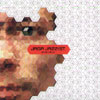 Having been quite active on the European music scene over the last fewyears, receiving some notable praises that include a Grammy nominationin their homeland, Norwegian music collective Jaga Jazzist appear to begaining deserved recognition across the Atlantic for their uniquecombination of jazzy instrumental and electronic based music. Recentlyreleased in North America, the Animal Chin EP is comprised of three tracks from their debut release A Livingroom Hush, two remixes of tunes from said release and a sneak preview track from the soon-to-be-released full length disc The Stix.The rhythmically busy "Animal Chin" provides a whirlwind backing ofinterlacing guitar, keyboard and xylophone as a nice contrast for asmall woodwind section of saxophones and bass clarinet to play out amelody that moves gracefully with each progression. From the upcomingrelease, the more electronic-styled "Toxic Dart" snaps along to ablender mix of live and electronic percussion, bass and multiplekeyboard tweakings that gradually become less abstract with theaddition of woodwinds and some great surf guitar lines that jut out ofthe mix now and again. Drummer Martin Horntveth remixes "Lithuania"from its original relaxed standing of Rhodes piano, twangy guitar anddramatic woodwinds into a cut and paste version of its former self thatat times comes off as a frenetic videogame soundtrack. Yet anotherbonus not available on either of the full length releases, the 70ssoundtrack-inspired "Tristar" highlights some great arrangements forwah-wah guitar, harmonica and trombone. The Animal Chin EP is agreat introduction to the band's musical direction and remix workings,and at the same time gives some insight of what more to expect shortly.
Having been quite active on the European music scene over the last fewyears, receiving some notable praises that include a Grammy nominationin their homeland, Norwegian music collective Jaga Jazzist appear to begaining deserved recognition across the Atlantic for their uniquecombination of jazzy instrumental and electronic based music. Recentlyreleased in North America, the Animal Chin EP is comprised of three tracks from their debut release A Livingroom Hush, two remixes of tunes from said release and a sneak preview track from the soon-to-be-released full length disc The Stix.The rhythmically busy "Animal Chin" provides a whirlwind backing ofinterlacing guitar, keyboard and xylophone as a nice contrast for asmall woodwind section of saxophones and bass clarinet to play out amelody that moves gracefully with each progression. From the upcomingrelease, the more electronic-styled "Toxic Dart" snaps along to ablender mix of live and electronic percussion, bass and multiplekeyboard tweakings that gradually become less abstract with theaddition of woodwinds and some great surf guitar lines that jut out ofthe mix now and again. Drummer Martin Horntveth remixes "Lithuania"from its original relaxed standing of Rhodes piano, twangy guitar anddramatic woodwinds into a cut and paste version of its former self thatat times comes off as a frenetic videogame soundtrack. Yet anotherbonus not available on either of the full length releases, the 70ssoundtrack-inspired "Tristar" highlights some great arrangements forwah-wah guitar, harmonica and trombone. The Animal Chin EP is agreat introduction to the band's musical direction and remix workings,and at the same time gives some insight of what more to expect shortly.  Dub Tractor is the solo artist alias for Danish musician/ electronic-based artist Anders Remmer (Future 3) under which he blends laid back, machine-generated grooves that carry a smidgen of glitch, various synth patches, the odd vocal track, bass guitar and other low-end frequencies for results which are very pleasing to the ear. For his latest full-length release, Remmer offers up nine individual tracks, all of which tend to convey an overall relaxing and subtly melodic panorama of sound to varying degrees.
Dub Tractor is the solo artist alias for Danish musician/ electronic-based artist Anders Remmer (Future 3) under which he blends laid back, machine-generated grooves that carry a smidgen of glitch, various synth patches, the odd vocal track, bass guitar and other low-end frequencies for results which are very pleasing to the ear. For his latest full-length release, Remmer offers up nine individual tracks, all of which tend to convey an overall relaxing and subtly melodic panorama of sound to varying degrees.



